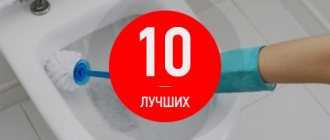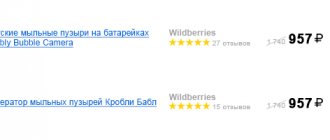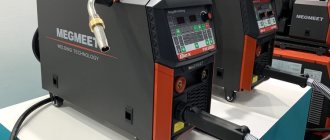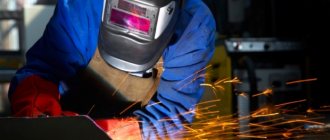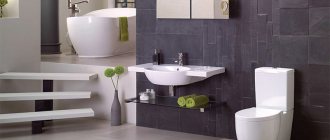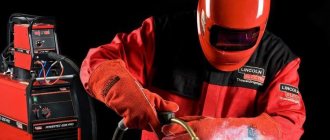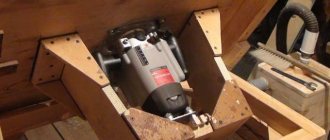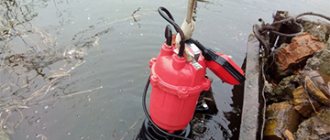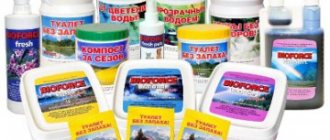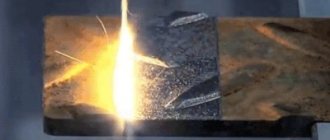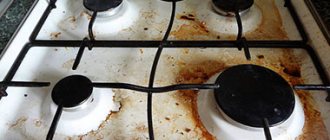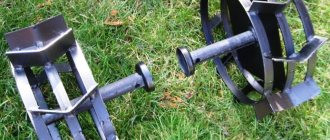The problem of body rusting is familiar to many motorists, especially owners of domestic cars.
We will not delve into the causes and consequences of this phenomenon (for many they are obvious), but in order to minimize its manifestation, as a rule, anti-corrosion treatment of the car body is carried out.
But to restore metal already damaged by corrosion, it will be necessary not only to mechanically treat it, but also to use rust converters.
Below we will consider what types of such products are available on the market and what their features are. Here are the TOP best rust converters based on real reviews and real properties.
First of all, we proceeded from the price-quality ratio, as well as popularity on the market. We avoided effective, but very expensive and unpopular means.
We will pay special attention to the rules for using these tools and precautions.
Varieties available on the market
You can find many types of converters on sale: in the form of a spray, gel or liquid.
But the main thing that you need to pay attention to when choosing is the chemical element that has a direct effect on rust.
But we must remember that such products are effective only when the rust thickness is no more than 100 microns (for some products up to 300 microns); for larger values, preliminary mechanical cleaning of the metal with a metal brush or other tool is necessary.
Acidic
A special feature of acid converters is their ability to cope with corrosion on iron of any thickness. You can work at any temperature, including frost.
Such compositions are most often used to clean car bodies, metal structures and iron elements of household appliances.
The main component of such converters is orthophosphoric or hydroxycarboxylic acid. Its functions include the destruction of the upper corrosive layer and the creation of a film.
To obtain the best effect, it is necessary to apply the inhibitor to dry metal.
When rusty metal and acid converters interact, ferum oxide (Fe2O3) is converted into an inert salt, which is easily removed from the car body.
The downside is that after treatment it is necessary to wash off the chemical composition from the surface to protect the metal from unnecessary exposure.
For application, you can use a spray, roller or brush. In this case, only the damaged area is subject to treatment without touching the whole metal.
This is a mandatory requirement for galvanized surfaces, because acid destroys zinc.
It is necessary to work in a respirator, goggles and gloves. Good ventilation is required.
Pros:
- Lack of strict conditions of use.
- Can be used in cold weather.
- Large storage temperature range.
- Sale in containers from 1 to 12 liters.
Minuses:
- The need to protect the skin from acid action.
- Need for surface cleaning.
If an acidic rust converter gets on your skin, you must immediately wash it off with high pressure water, and if necessary, go to the doctor.
Acid-free (neutral)
Acid-free converters have been gaining popularity in recent years. They use neutral chemical components (not acidic), so such products are easy to use and have a low level of toxicity.
Manufactured based on the following components.
- Tannin.
- Zinc or manganese oxide.
Tannin
The most sought after ingredient with an organic base.
Once applied to damaged metal, it interacts with rust and converts it into inactive compounds with optimal adhesion.
Tannin-based converters can be filled with water, which makes them an attractive option for protecting pipes, fittings, hidden car body cavities and other metal products.
Zinc or manganese oxide
Such compositions act on damaged metal and create protection that prevents corrosion.
Acid-free converters can be applied using any method, be it a sprayer, brush or roller.
After application, the rusty area acquires a black tint, which allows you to see the treated areas.
Pros:
- No need to rinse with water.
- Available for use in any conditions.
- Dries within two to three hours.
- Possibility of visual control of processing quality.
- Safety for humans.
Minuses:
- higher cost.
Although safe, the use of PPE is also recommended when processing rusty metal using neutral converters.
What else is included?
In addition to the main active ingredients, manufacturers add other ingredients that provide protection against future corrosion.
Let's highlight the main ones:
- Corrosion inhibitors are chemical components designed to protect metal from water and other harmful components.
- Thickeners are components that increase the effectiveness of rust converters and simplify their use. Their function is to transform the product into foam or paste, which eliminates dripping. Such additives are often used in products in the form of a gel.
- Additional ingredients. To increase the effectiveness of products, different manufacturers add different “chemicals” to their composition to impart odor or other protective properties.
When purchasing, it is important to carefully study the composition, and only then make a decision.
Types of acids
For etching metal surfaces and cleaning metal from rust, different types of acids are used. Each of them differs in composition and action. Chemicals can be divided into two groups:
- Washable - after using them, surfaces should be rinsed with cold water. Any plaque or rust will be washed away, but without additional drying, corrosion may appear.
- Leave-in - they do not need to be washed off after use. Most effective in removing rust.
To clean metal, hydrochloric and sulfuric acid should be used. Healing hormone is added to the solution. If it is missing, metal surfaces will be damaged.
Orthophosphoric
Phosphoric acid is a powder that must be diluted with water before use. It is used in various fields of industry and medicine. Primers for metal surfaces are diluted with acid. Pure powder diluted with water can be used to remove rust.
Phosphoric acid is an active substance that quickly removes any plaque, dirt, or rust, but it must be used with caution. With prolonged contact with metal, it can burn holes or thin the sheet.
Sulfuric
Sulfuric acid can only be used in a 5% aqueous solution. It belongs to indelible substances. If the substance is used without adding an inhibitor, the surfaces will be damaged.
Sulfuric acid (Photo: Instagram / shorinalexandr)
Lemon
Knife makers use it to burnish blades, but for this it is recommended to use a product without impurities. You need to squeeze lemon juice onto a rag and rub the blade with it.
Phosphorus
Used to clean metal surfaces from rust formation. It practically does not dissolve scale. Residues of acid must be washed off with water.
Solyanaya
To remove rust from metal, use a 20% aqueous solution of hydrochloric acid. It is recommended to preheat it to 40°C to speed up the process.
Dairy
Lactic acid is not suitable for etching and cleaning rust from metal surfaces. On the contrary, a high concentration of this substance leads to metal corrosion.
Nitrogen
Concentrated nitric acid can be used to treat various metals. Only the noble ones are not suitable for this. To use it, it must be mixed with water in any ratio.
Canisters of nitric acid (Photo: Instagram / opthimkmv)
How to use a rust converter correctly
When treating a damaged area, pay attention to the depth of the corrosion. If it is more than 100 - 150 microns, the use of a converter is ineffective.
In this case, preliminary preparation in the form of mechanical finishing is needed.
As a rule, cleaning takes place in two stages. First, mechanical preparation is performed, and only then chemical surface treatment using converters.
Exact instructions for use are given in the instructions for the product, but the general algorithm of actions is as follows:
- Mechanical restoration. At this stage, it is necessary to remove pieces of rust using a wire brush or an angle grinder with a special wheel.
- Degreasing. To achieve the desired effect, it is recommended to use a solvent.
- Cleaning. Direct use of the rust converter, taking into account the instructions and release form.
- Surface treatment with water, if required.
- Degreasing. At this stage, the same solution is used as discussed above.
- Application of primer. The exception is when the converter prepares the surface for painting.
The sequence of actions may vary depending on the characteristics of the product used.
Lists of the best converters
Among the best rust converters, we can highlight the best in the following categories:
- The converter is in aerosol form.
- The cheapest converter for a car.
- Best in liquid form.
Aerosol converter
ABRO RC-1000 is the best aerosol converter. The product quickly dissolves the rust layer, converting it into soil. Convenient application directly from the can does not require additional tools. Immediately after treatment, you can coat the metal with paint without washing off the product. There is no re-corrosion under the paint, and the metal is covered with a protective film.
Price: 446 rub.
The cheapest converter for a car
Zincar is the cheapest means for converting car rust. The treated surface is ready for painting after 30 minutes. The product reacts immediately after application, and after processing and painting, the metal does not corrode again.
Cost: 86 rub.
Best in liquid form
Fenom is the undisputed winner in this category. A small 100 ml bottle is enough to treat minor damage and chips. The product acts for 20 minutes and forms a protective film-primer on the surface. After exposure, the converter must be rinsed with water and wiped dry; after completion, you can paint the surface without using a primer.
Price tag: 165 rubles.
Precautionary measures
When using rust converters, you must understand that these are chemically active substances.
They must be used in strict accordance with the manufacturer's instructions and recommendations.
The use of such means is prohibited in the following cases:
- The integrity of the packaging has been compromised.
- The stated expiration date has passed.
- No personal protective equipment.
- It is impossible to organize normal ventilation.
It is necessary to remember the toxicity of such substances, which requires respiratory protection with a respirator.
Processing at home
To clean rust from metal, you do not need to use industrial equipment. You can carry out the work at home. To do this, you need to prepare tools and consumables. We must not forget about compliance with safety regulations.
Tools
To treat metal with orthophosphoric acid, you need to prepare:
- deep stainless steel container;
- roller, wide brush or spray (if there is no suitable utensil to completely immerse the metal part);
- reagent;
- ammonia and medical alcohol, water;
- plastic stick;
- detergent.
Additionally, you may need a metal brush.
Metal brush (Photo: Instagram / hoz.magazin)
Preparation of the solution
Before starting to process a metal part, you need to prepare a working solution:
- Pour 1 liter of water into a metal container.
- Add 150 ml of acid.
- Mix the ingredients with a plastic stick.
You also need to make a composition to wash away the remaining caustic substance. Cooking method:
- Pour 500 ml of water into a glass jar.
- Add 50 ml of medical alcohol, 450 ml of ammonia.
- Mix the ingredients.
After preparing the acid solution, you can begin processing.
Treatment
Cleaning metal from rust:
- Prepare your work surface. Clean off coarse dirt with a metal brush.
- Cover parts of the part that do not need to be treated with plastic wrap. This way they can be protected from the caustic effects of the reagent.
- Degrease the work surface from any grease film using a detergent. Remove any remaining moisture with a dry cloth.
- Cover the prepared part of the workpiece with the cleaning composition using a roller, brush or spray. Leave for 1 hour.
All that remains is to wash off the remaining rust, dirt, and acid using a washing solution. It is important to remember that it is impossible to remove a thick layer of rust with a chemical reagent. To do this, you need to use a grinder with a grinding disc or a grinder.
If you need to clean a metal surface of rust and create a protective layer against corrosion, a homemade acid composition will not work. To do this, you need to use a commercial chemical. Before using it, you must read the instructions on the label.
Processing results (Photo: Instagram / sk.elvis)
Safety precautions
Safety regulations:
- Work must be carried out in protective equipment. It is necessary to wear a respirator, rubber gloves, long sleeves, and safety glasses.
- The room should be well ventilated.
- Flammable substances, heating equipment, and open flame sources should be removed from the workbench.
- After working with some powder reagents, you need to brush your teeth and rinse your mouth.
- After using chemicals, wash your hands thoroughly.
If the substance gets on the skin, the area should be washed with copious amounts of cold water. For extensive burns, consult a doctor immediately.
Sealing rust
Remove one of the elements of the electrochemical reaction and rust will not form. You can remove oxygen from the metal and corrosion will not spread.
In theory, if the coating seals rust well and its integrity is not compromised, then there is no reason to allow it to spread further.
Rust Encapsulator is a primer-like coating that can be applied to any material. It seals off air and water to stop further corrosion. It can be used separately from or after the converter to stop minor rust and prevent its further occurrence. This rust sealant primer has a urethane base and inhibitors to stop corrosion.
Theoretically, epoxy primer can be used to seal rust residues that have been treated with a converter and represent a stable, non-flaking base, since it creates a dense film and “cuts off” the supply of oxygen and moisture to the applied surface. However, manufacturers of epoxy primers always write in the instructions to apply them to clean metal, without traces of corrosion. Still, there is a positive experience of using epoxy primer for a minimal amount of converted rust (residues of the converter acid must be washed off and neutralized, see above). It is better to use a sealant primer specifically designed for this purpose.
Is it important to remove all rust before applying sealer primer? This is quite important, since rust is a weak link, so the coating on it will not adhere very well. A poor foundation will cause heterogeneity and damage to the integrity of the soil, which will allow moisture to enter and corrosion will reappear.
The rust sealant reacts to rust residues, neutralizes it and leaves behind a polymer coating that can serve as a primer for further coatings.
Again, any coating is not completely waterproof. Theoretically speaking, oxygen and water have a propagation speed that is not equal to zero even through a very dense paint film. This way, the rust can continue to spread, but at a much slower rate.
Rust sealant should be used:
- On thin surface rust.
- On rust of medium thickness, when it is larger than surface and spreads slightly into the metal, but does not yet affect its strength. In this case, you must first remove as much rust as possible by sanding or sanding. Next, apply 2-3 layers of sealant for better penetration.
- On bare metal. A rust sealant primer can be used on bare metal to prevent corrosion.
- On a mixed surface. Rust sealant is good to apply on surfaces with varying degrees of corrosion, mixed with normal metal and old paint.
Rust sealant does not need to be used:
- Over the rubberized surface on the bottom or over existing rust protection.
- In hidden cavities or hard-to-reach places. Rust sealant requires preliminary preparation before application (cleaning off flaking rust). The product requires full coverage to stop corrosion. In areas where preparation is not possible, it is not advisable to use rust sealant.
- Heavily corroded metal is a poor candidate for sealing.
How cars are chewed
Today, corrosion has greatly weakened its position - galvanized body parts and more advanced primers and paints have appeared.
In addition, the automaker’s long-term warranty against through corrosion reassures the car owner: they say, it’s enough for my lifetime. And since cars today are replaced quite often, it would seem that there is no point in their anti-corrosion treatment. But this is only at first glance. In reality the picture is different. Firstly, the initiator of corrosion is not only the age of the car. It can actively develop even on new cars in places where there are deep chips from stones, when the paintwork is pierced to the metal. Secondly, its appearance can be triggered by body repairs after a minor accident. It’s no secret that when carrying out repair work, craftsmen often use body parts produced by their eastern neighbor. And their elements corrode much more readily than their “native” ones. Finally, the active life of a huge number of cars begins not at all with the first owner, who is accustomed to frequently updating his “garage,” but with the second and subsequent ones. All these cars are far from brand new, and their owners have no extra money. Therefore, they are interested in maximizing the safety of the purchased transport.
The word “corrosion”, as you know, comes from the Latin corrode, that is, “gnaw”. We are talking about the corrosion of the material when it interacts with the external environment. Classic methods of combating corrosion have been known for a long time, but new ones are also emerging.
Removing rust with potent agents
There are chemicals for removing rust (rust remover or rust dissolver - rust remover or solvent). Rust remover removes rust using a strong, concentrated acid. This can be hydrochloric, oxalic, phosphoric (higher concentration than in the rust converter) or other acid.
Of course, rust removal is a better option than converting or sealing it, and is a concrete answer to the question “how to remove rust from a car?”, but this remedy has its own characteristics and disadvantages.
Features of rust remover:
- Rust remover is most often used as a product that requires soaking a rusty part, so it is mainly used to remove corrosion on small parts. However, this product can also be used on large surfaces. For stationary parts with a large area, it is necessary to apply the product, then cover it with plastic film to prevent its evaporation.
- Hydrochloric acid and oxalic acid, as the main active ingredients of rust remover, are very toxic, so rust remover must be used with extreme caution.
- Strong acids have an adverse effect on metal, especially if the action is too long. After this action, the corrosion resistance of the metal is weakened.
Considering all the above features of rust removers, they are still used when removing rust on the body. An important point after using such a product is to wash off the acid and neutralize its residues.
Ways to combat corrosion
Metal corrosion is a destructive, lattice-destroying, redox chemical process. It is most often caused by the high chemical activity of the metals themselves - many remember from the school chemistry course the “line” of the activity of elements. It can be activated when unfavorable conditions are created, for example, high humidity and low temperatures, in an aggressive salt, acidic or alkaline environment.
Most often we have to deal with corrosion of ferrous metals, that is, various types of steel and cast iron, used literally everywhere, in all spheres of human activity. The process begins to reveal itself by the appearance of red stains or stains on the metal surface.
If corrosion is not dealt with, it can show its extremely destructive power - metal products quickly become unusable.
If no steps are taken, the outbreak begins to grow, capturing more and more areas. And sometimes this happens unnoticed. Thus, many areas of mechanisms, instruments, etc. - are simply hidden from view, and can only be seen when the unit or entire device is completely disassembled. And other pockets of corrosion may be hidden under a layer of paint for the time being, and only when the process has gone very far - first appear in the form of swellings, and then as rust breaks out.
Some owners try to deal with identified pockets of corrosion mechanically. That is, by grinding the damaged area with sandpaper or special discs, reaching the “healthy” metal.
However, such a technique, if it can be applied, should be done with extreme caution, and only as a preliminary step, before applying special compounds. Only mechanical cleaning is a very ineffective means.
Spot corrosion showing through the paint layer
It is especially difficult to remove small pinpoint rust using this method, since during the cleaning process they become clogged with finely dispersed corrosive dust, and they become practically invisible. But the trouble is that they don’t go away, and will definitely show themselves in the future, even after coloring. Therefore, chemical treatment is more reliable.
In addition, if thin metal is affected by rust, then during cleaning, under the pressure of brushes or abrasive material, it can be damaged down to a through hole.
In this regard, it is recommended to use chemical compounds that clean the metal and prevent the occurrence of corrosion in the future. Moreover, with their help, you can even successfully deal with outbreaks in hard-to-reach areas, where you cannot reach the affected area by any other means without disassembling the mechanism.
Basic ways to combat body corrosion
| Way | Algorithm | approximate cost | Applicability | pros | Minuses |
| Service visit | Washing, drying, applying the drug | From 15000 ₽ | Most often - the second owner who took the car for a long time | Proven technology, turnkey work | Expensive |
| "Classic painting" | Stripping, priming, painting | Correction of several paintwork defects - from 4000 ₽ | On the exterior panels of the car to give a great look | The car looks almost like new. | Considerable labor intensity, selection of paint is required, but on external panels this is practically the only way |
| "Classic" with rust converter | Rust converter treatment, stripping, priming, painting | From 1000 ₽ when working on your own | On the external surfaces of cars that have nothing to lose, and all invisible surfaces | The rust will disappear | The surface will have an uneven appearance and an unclear color. |
| "Classic" with galvanizing | Zinc-rich primer | From 500 ₽ when working on your own | It is very noticeable on the external surfaces of any car except silver ones. | Zinc will provide protective protection | Poor adhesion of zinc particles to the treated surface |
| Electrochemical | Electrochemical stripping and galvanizing | From 800 ₽ when working on your own | In places where the paintwork is damaged and corrosion has begun. | Allows you to completely eliminate the source of corrosion | A stain the color of a “galvanized bucket” remains |
| Self-treatment with Movil with zinc | Apply to areas with damaged paintwork | From 1000 ₽ when working on your own | In places where the paintwork is damaged | A high-quality product provides lifelong body protection | Movil, made using simplified technology, does not give the desired effect |
| Self-treatment with Movil with rust converter | Apply to areas with damaged paintwork and incipient corrosion. | From 1000 ₽ when working on your own | In places where the paintwork is damaged and corrosion has begun. | A high-quality product provides lifelong body protection | Movil, made using simplified technology, does not give the desired effect |
